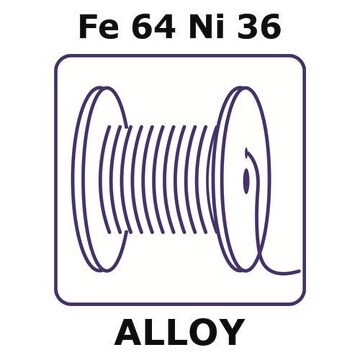GF59266222
Aluminum
wire reel, 1m, diameter 1.0mm, as drawn, 99.999%
Sinónimos:
Aluminum, AL005182
About This Item
Productos recomendados
Análisis
99.999%
formulario
wire
temp. de autoignición
1400 °F
fabricante / nombre comercial
Goodfellow 592-662-22
resistividad
2.6548 μΩ-cm
L × diám.
1 m × 1.0 mm
bp
2460 °C (lit.)
mp
660.37 °C (lit.)
densidad
2.7 g/mL at 25 °C (lit.)
cadena SMILES
[Al]
InChI
1S/Al
Clave InChI
XAGFODPZIPBFFR-UHFFFAOYSA-N
Descripción general
Información legal
Código de clase de almacenamiento
13 - Non Combustible Solids
Clase de riesgo para el agua (WGK)
WGK 3
Punto de inflamabilidad (°F)
Not applicable
Punto de inflamabilidad (°C)
Not applicable
Elija entre una de las versiones más recientes:
Certificados de análisis (COA)
Lo sentimos, en este momento no disponemos de COAs para este producto en línea.
Si necesita más asistencia, póngase en contacto con Atención al cliente
¿Ya tiene este producto?
Encuentre la documentación para los productos que ha comprado recientemente en la Biblioteca de documentos.
Nuestro equipo de científicos tiene experiencia en todas las áreas de investigación: Ciencias de la vida, Ciencia de los materiales, Síntesis química, Cromatografía, Analítica y muchas otras.
Póngase en contacto con el Servicio técnico